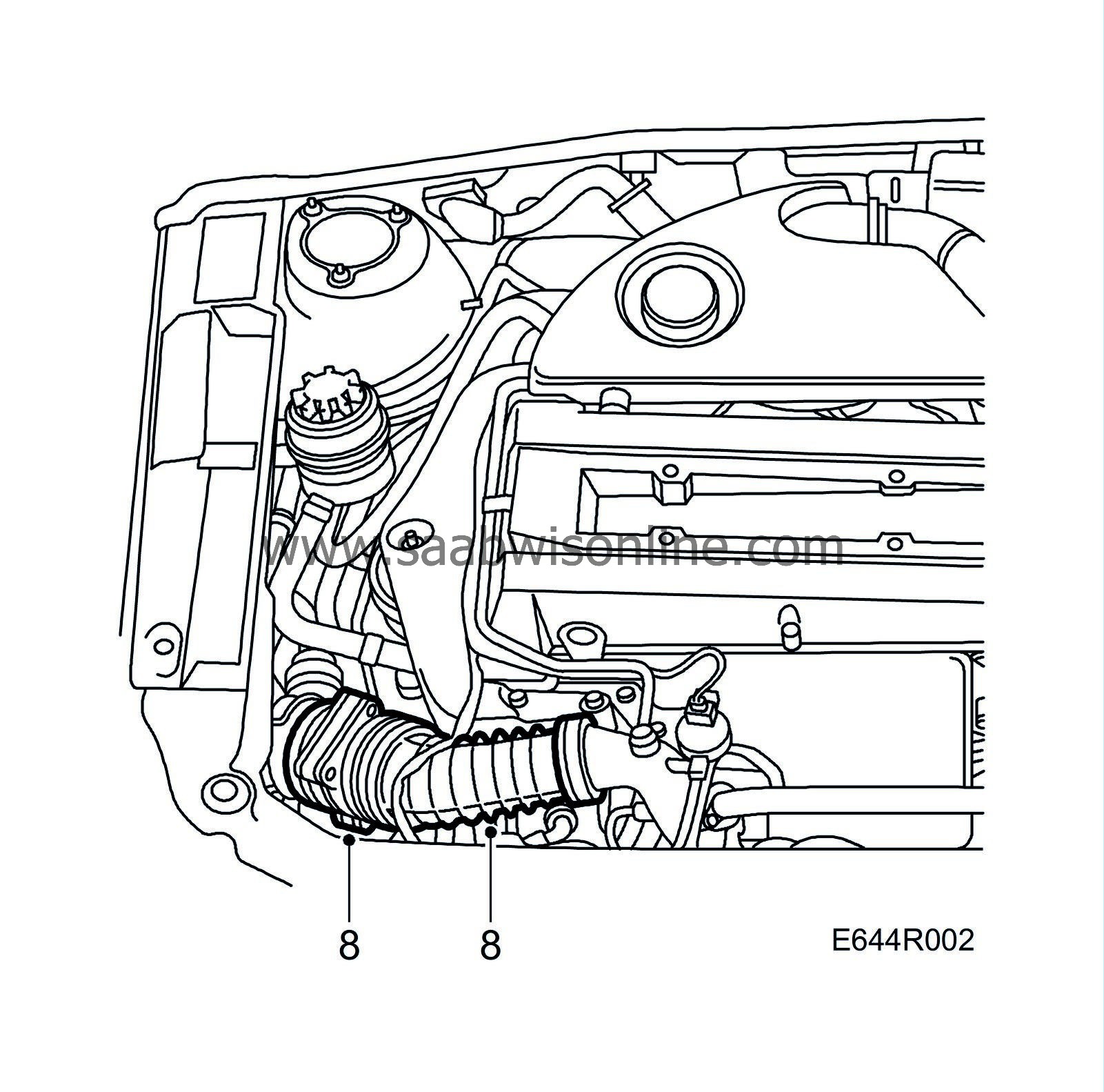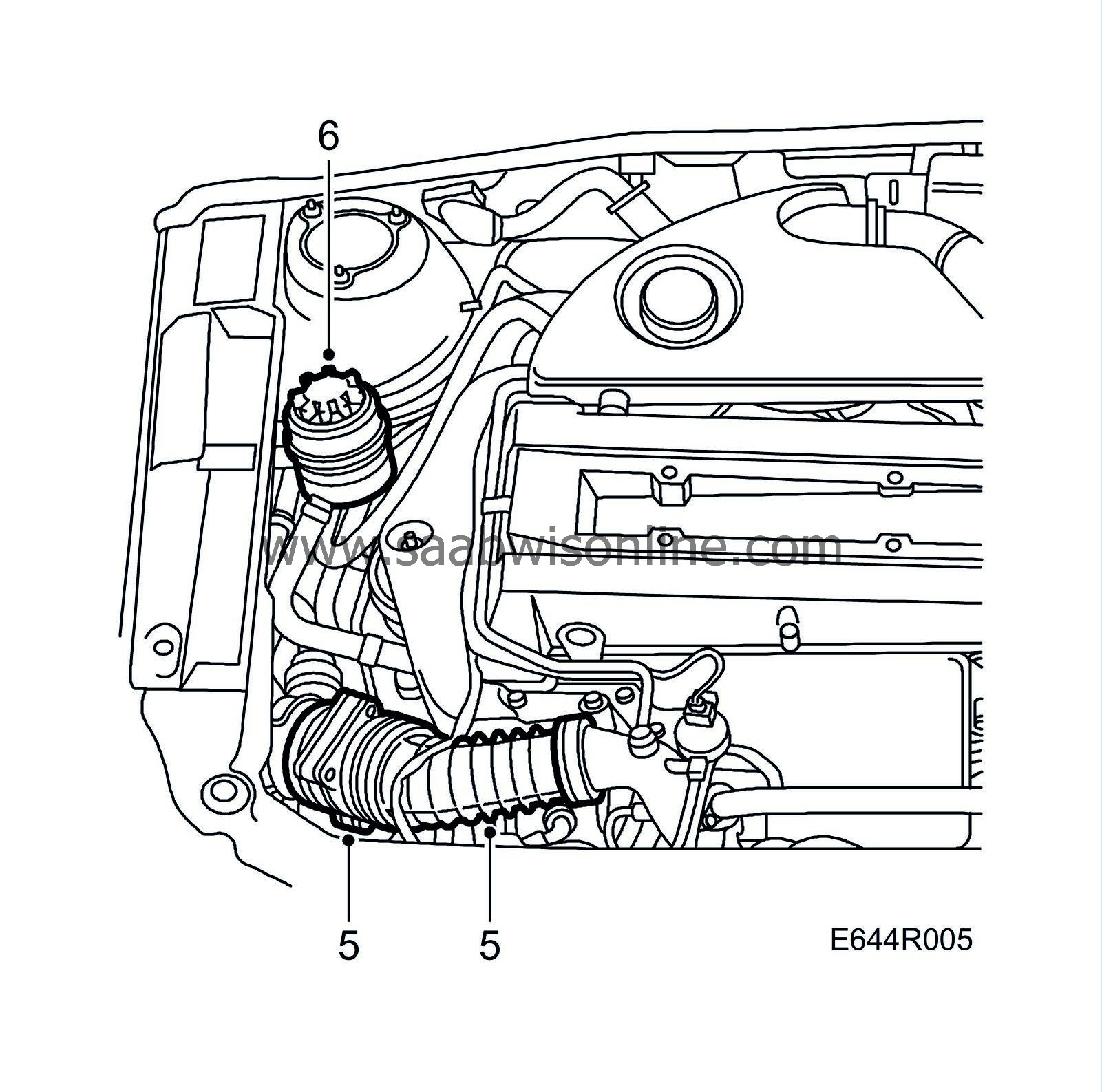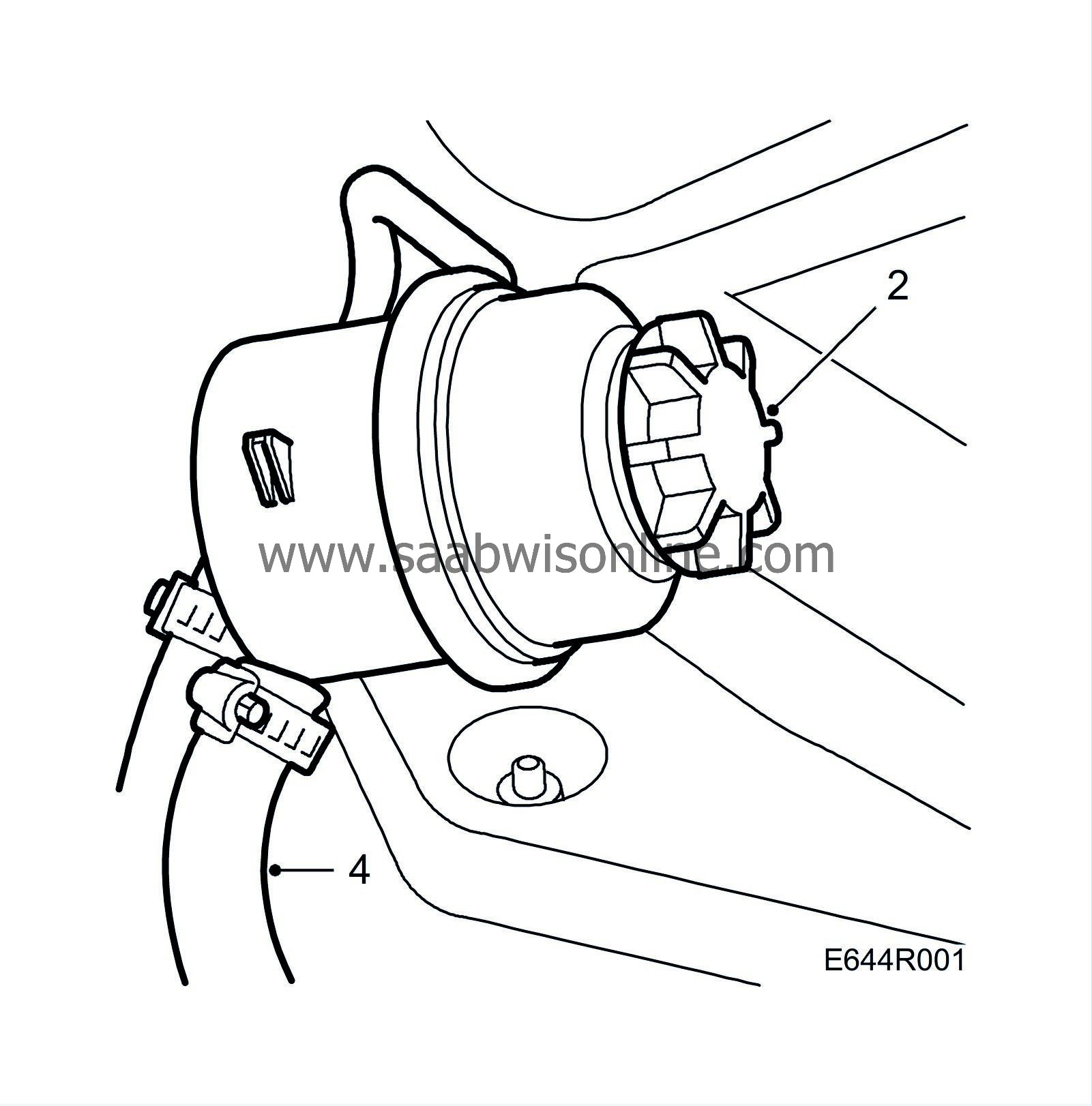Power steering pump
| Power steering pump |
| Important | ||
|
Scrupulous cleanliness must always be observed when carrying out any work involving hydraulic components. |
||
| 1. |
Drain the power steering fluid reservoir, using oil suction equipment.
|
|
| 2. |
Detach the reservoir and lift it aside.
|
|
| 3. |
Carefully clean the area round the return hose's connection to the power steering fluid reservoir.
|
|
| 4. |
Detach the return hose from the power steering fluid reservoir.
|
|
| 5. |
Place the end of the hose in a receptacle that holds at least 1 litre.
|
|
| 6. |
Raise the front assembly so that the wheels are clear of the floor and start the engine so that the power steering fluid is pumped out of the steering gear. Turn the steering wheel to full right and full left lock. Switch off the engine when the flow of fluid diminishes, as the pump should not be allowed to run dry.
|
|
| 7. |
Connect the return hose to the power steering fluid reservoir and fit the reservoir back in place.
|
||||||||||
| 8. |
Detach the intake hose with mass air flow sensor and turn it to one side.

|
|
| 9. |
Use a ratchet handle extension to relieve the strain on the belt tensioner and remove the belt.
|
|
| 10. |
Remove the suction hose from the pump.

|
|
| 11. |
Slacken the delivery pipe's hose clip and detach the pipe from the pump.
|
|
| 12. |
Undo the pump retaining bolts and remove the pump.
|
|
| To fit |

| 1. |
Fit the pump.
Tightening torque 25 Nm (20 lbf ft). |
|
| 2. |
Connect the delivery pipe to the pump and tighten the hose clip.
Tightening torque 30 Nm (25 lbf ft). |
|
| 3. |
Connect the suction hose to the pump.
|
|
| 4. |
Use a ratchet handle extension to relieve the strain on the belt tensioner and fit the belt.
|
|
| 5. |
Connect the intake hose with mass air flow sensor.

|
|
| 6. |
Refill the system with new fluid of the specified grade, refer to
 .
.
|
||||||||||
| 7. |
Run the engine for 5 seconds.
|
||||||||||
| 8. |
Check the fluid level in the reservoir, and top up if necessary. At 20°C, the fluid level should be half way between the MAX and MIN marks.
|
|
| 9. |
Start the engine and let it run until no more bubbles appear in the fluid reservoir. Use a torch to be able to see properly. Abnormal noise from the pump is an indication that there is still air in the system.
|
|
| 10. |
Switch off the engine and check the fluid level. Top up if necessary.
|
|
| 11. |
Check for leakage around the connectors on the pump.
|
|
| 12. |
Road test the car.
|
|



